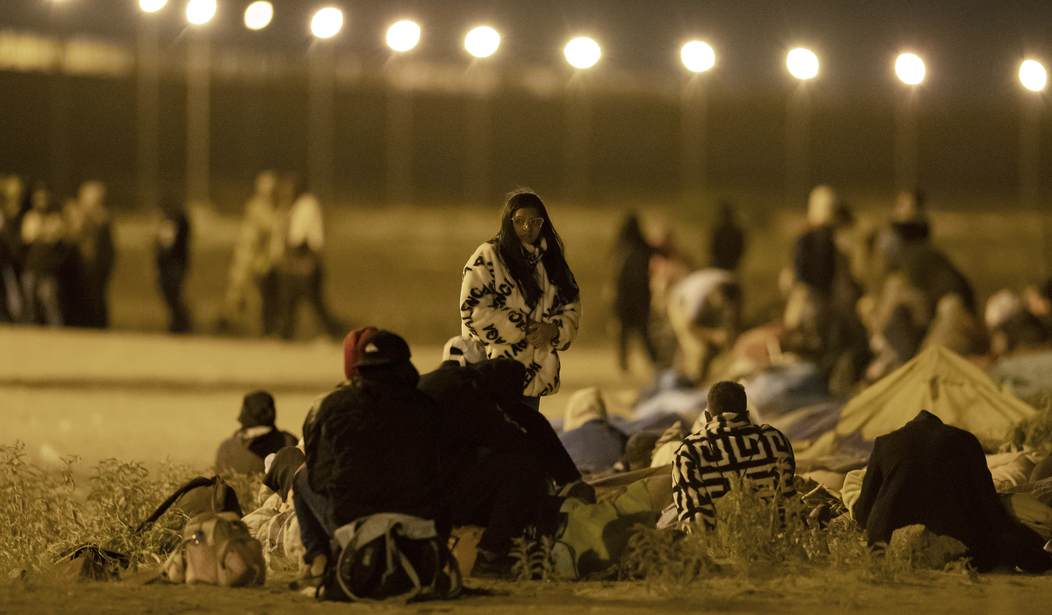On Tuesday, a federal judge blocked the Biden administration’s asylum policy which enabled immigration authorities to deny asylum to those who arrive at the U.S. border without having first sought asylum in a country they passed through or applying online. While it may seem counterintuitive given the seemingly lax approach to immigration enforcement under Joe Biden, the administration had implemented a rule which mirrored that of the Trump administration, arguing that this one was different as it afforded alternative legal pathways for those seeking entry into the U.S.
The administration implemented new rules in the face of the expiration of Title 42, which allowed for restrictions based on health concerns related to the COVID-19 pandemic.
WASHINGTON (AP) — With COVID-19 immigration restrictions set to expire, the Biden administration on Thursday announced measures meant to stop migrants from illegally crossing the U.S.-Mexico border, both by cracking down on many of those who do come, and by creating new pathways meant to offer an alternative to the dangerous journey.
The effort includes opening processing centers outside the United States for people fleeing violence and poverty to apply to fly in legally and settle in the United States, Spain or Canada. The first processing centers will open in Guatemala and Colombia, with others expected to follow.
Additional measures taken to address the crisis included the CBP One App, rolled out in January. Unfortunately, the app has presented numerous technical issues.
Though the government opened some new avenues for immigration, the fate of many people is largely left to a U.S. government app only used for scheduling an appointment at a port of entry and unable to decipher human suffering or weigh the vulnerability of applicants.
The CBP One app is a key tool in creating a more efficient and orderly system at the border “while cutting out unscrupulous smugglers who profit from vulnerable migrants,” the Department of Homeland Security said in an email to The Associated Press.
But since its rollout in January, the app has been criticized for technological problems. Demand has far outstripped the roughly 1,000 appointments available on the app each day.
In his ruling on Tuesday, Judge Jon Tigar of the United States District Court for Northern California concluded that the new regulations violate U.S. asylum law.
U.S. District Judge Jon Tigar in Oakland concluded that the regulation violates U.S. asylum law, which since 1980 has allowed migrants on American soil to request humanitarian protection as a way to halt the government’s efforts to deport them, regardless of how they entered the country.
…
In his ruling Tuesday, Tigar said the rule is too restrictive because it considers factors that Congress did not explicitly authorize, such as whether migrants used a lawful migration program before seeking asylum. He also determined that some of the exemptions to the asylum restriction are “unavailable to many noncitizens.”
“The Court concludes that the Rule is contrary to law because it presumes ineligible for asylum noncitizens who enter between ports of entry, using a manner of entry that Congress expressly intended should not affect access to asylum,” he wrote.
“The Rule is also contrary to law because it presumes ineligible for asylum noncitizens who fail to apply for protection in a transit country, despite Congress’s clear intent that such a factor should only limit access to asylum where the transit country actually presents a safe option,” Tigar added.
The judge did, however, delay his ruling from taking effect for two weeks to give the administration time to appeal.
The administration has cited the measures as critical to its efforts to strike a balance between border enforcement and the pursuit of valid asylum claims. Assuming the administration appeals, the matter will next head to the Ninth Circuit and may ultimately wind up at the United States Supreme Court. The Supreme Court previously ruled in favor of the Trump administration policy which limited asylum for those who failed to first apply for asylum in a country they passed through.














Join the conversation as a VIP Member